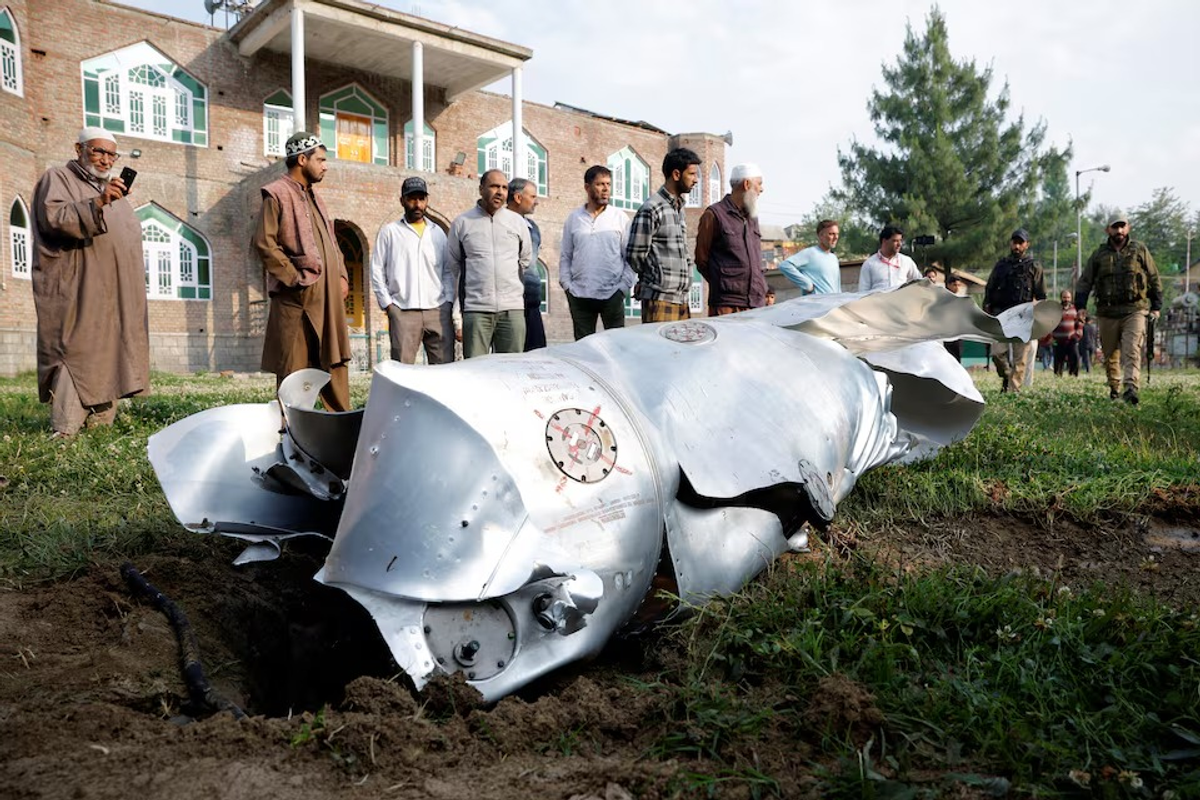Report to US Congress recognizes Pakistan military ‘success’ over India in May conflict
Report notes conflict gave China chance to test and showcase its modern defense systems
News Desk
The News Desk provides timely and factual coverage of national and international events, with an emphasis on accuracy and clarity.

Metal debris lies on the ground in Wuyan in India-administered Kashmir's Pulwama district, May 7.
Reuters
A report submitted to the US Congress has highlighted Pakistan’s “military success” over India during the four-day aerial and artillery conflict in May, while also noting the strategic role of Chinese weaponry.
The report, released on Tuesday by the US-China Economic and Security Review Commission - which evaluates the national security implications of US-China trade and economic relations - said: “Pakistan’s military success over India in its four-day clash showcased Chinese weaponry”.
The hostilities erupted following a deadly attack on April 22, 2024, in Indian-administered Kashmir that killed 26 tourists. India accused Pakistan-based militants of orchestrating the attack, a charge repeatedly denied by Islamabad. In response, India carried out air and missile strikes across the Line of Control, triggering a sharp escalation.
Between May 7 and 10, both sides engaged in heavy artillery exchanges and drone attacks, raising concerns over a potential full-scale war. The confrontation was brought to a halt by a “full and immediate ceasefire” brokered by US President Donald Trump on May 10, temporarily easing tensions in the region.
During the aerial skirmishes, Pakistan claimed it had downed seven Indian aircraft without sustaining any losses, underscoring its operational advantage.
The report emphasized that the conflict provided China with a strategic opportunity to test and promote its modern defense systems.
“Beijing opportunistically leveraged the conflict to test and advertise the sophistication of its weapons, useful in the contexts of its ongoing border tensions with India and its expanding defense industry goals,” the report noted.
It added that the May clash marked the first real-world use of several Chinese systems in combat, including the HQ-9 air defense system, PL-15 air-to-air missiles, and J-10 fighter jets, effectively serving as a live field experiment for Beijing.
The report also highlighted China’s broader strategic influence, citing French intelligence assessments that it launched a disinformation campaign to undermine the sale of French Rafale jets in favor of its own J-35 fighters. Social media campaigns using AI-generated and video-game-style images of supposed wreckage were reportedly deployed to support this effort.
“Chinese Embassy officials convinced Indonesia to halt a purchase of Rafale jets already in process, furthering China’s inroads into other regional actors’ military procurements,” the report added, underscoring the geopolitical ripple effects of the conflict beyond South Asia.










Comments
See what people are discussing